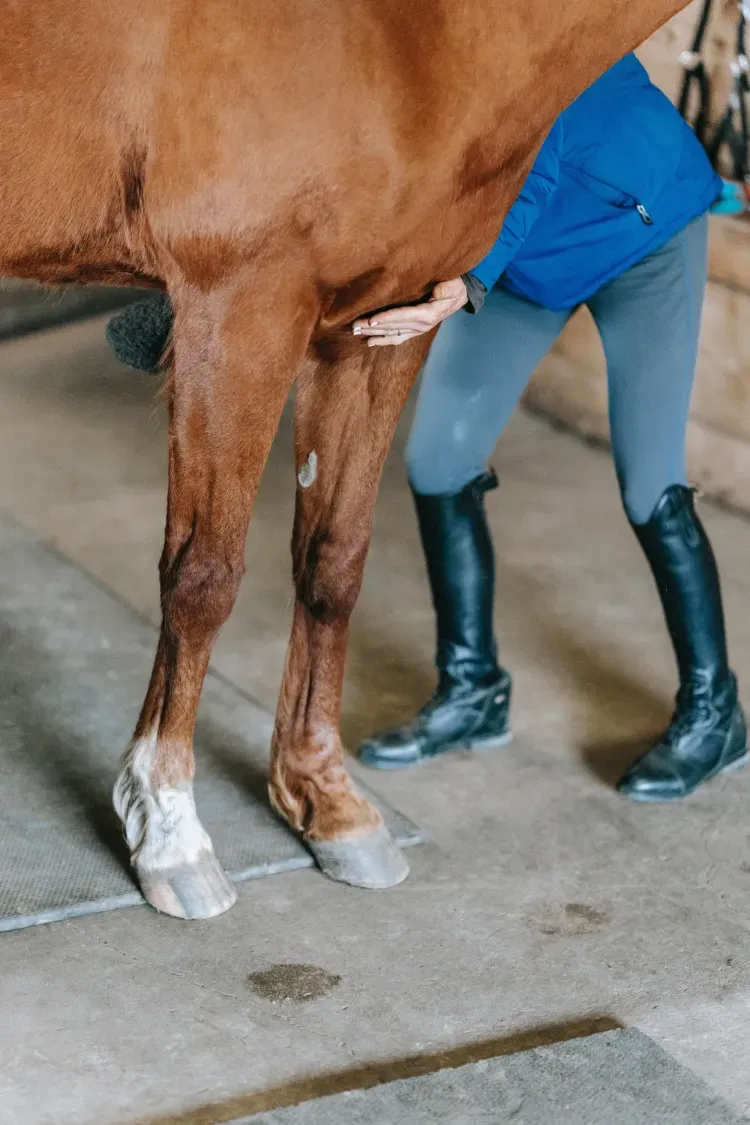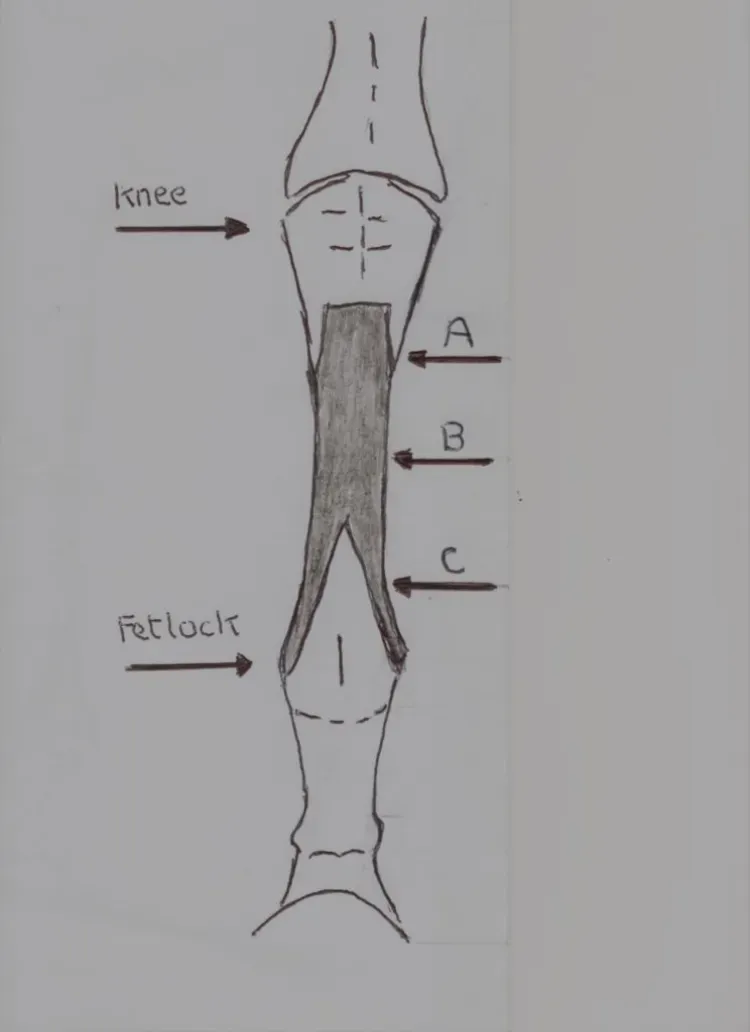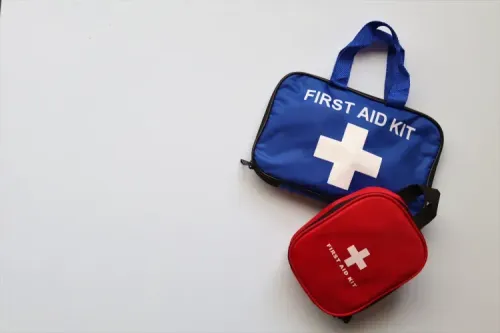
Two reasons horses develop suspensory support ligament injuries are listed here:
- Repetitive strain injury
- Direct trauma.
Now we are going to consider where on the ligament the problems occur.
So where are the Injury Sites
Different equine activities predispose a horse to injure different areas of the ligament. There are three parts that injure and these are given below:
- The upper third and this is the proximal part
- The middle section and this is the main body
- The lower third, where there are branches of the ligament.

This diagram shows the three parts of the Suspensory Support Ligament
A. Proximal Suspensory
B. Main Body
C. Branch Suspensory
Next look at the part of the ligament injured in relation to the activity a horse performs.
Damage in the Front Leg
A. Damage to the proximal part is common in all ridden activities
B. Injury to the main body is less common but appears most often in Steeple Chasers who gallop and jump
C. Branch injuries are common and jumpers are often affected
Damage in the Back Leg
In the back leg damage to the proximal ligament is common in dressage horses.
Now look at the Symptoms of an Injured Ligament
But first and as words of warning, damage to any part of the suspensory ligament must be treated seriously. Chronic suspensory problems are hard to successfully treat.
1. Damage in the Proximal Section
In the proximal section, lameness will be present. Heat and swelling are harder to detect, so often there will be no outward signs of an injury. When circling on the lunge lameness appears on the outside leg.
2. Damage in the Body Section
A sprain in the body of the ligament is detected through the presence of heat and swelling. There will be a painful reaction on palpitation and depending on the severity lameness is present.
3. Damage in the Branch Section
A sprained branch section of the ligament will cause heat and swelling. There will be pain on the affected side of the fetlock. A degree of lameness is usually observed.
What do I do if I suspect a Suspensory Ligament Sprain
This is something that will need full veterinary support.
While waiting for the Veterinary
This is the time to use cold therapy (leg ice, hosing with cold water, etc.) followed by bandaging and box rest.
Veterinary Identification of the Problem
Your vet will have a number of strategies to identify the site of the injury. The following procedures are used:
- Ultrasound scanning for branch and body sprains to identify the extent of the ligament damage and any bone damage
- Nerve blocking for proximinal sprains as ultrasound scanning is less effective behind the knee
- MRi scans but these will require a general anesthetic and are rarely used.
Veterinary Treatment of a Suspensory Injury
Veterinary treatments vary depending on the site and severity of the injury. The following are generally available:
- Laser treatment
- Therapeutic ultrasound
- Shockwave therapy
- Stem cell injections
- PRP injections
- Surgery.
The Role of The Farrier
If a foot imbalance has caused a branch suspensory sprain your farrier must rebalance the foot.
Prolonged Rest is Vital
There will be no quick fix and to start with total box rest is required. This will progress to exercise in hand and gradually to more exercise from there.
The Outlook After Treatment
The athletic outlook for a horse will depend on the severity and location of the problem. Typical scenarios are listed here:
- Proximal suspensory damage in the front limbs often heals well
- However proximal sprains in the rear legs are harder to heal
- Main body sprains are frequently damaged again and the horse usually needs a quieter occupation
- Damage to the branches often heals badly with a higher chance the horse will be retired.

Article Suggestion
Horse First Aid Kit: How to Construct a Comprehensive Equine First Aid Kit
